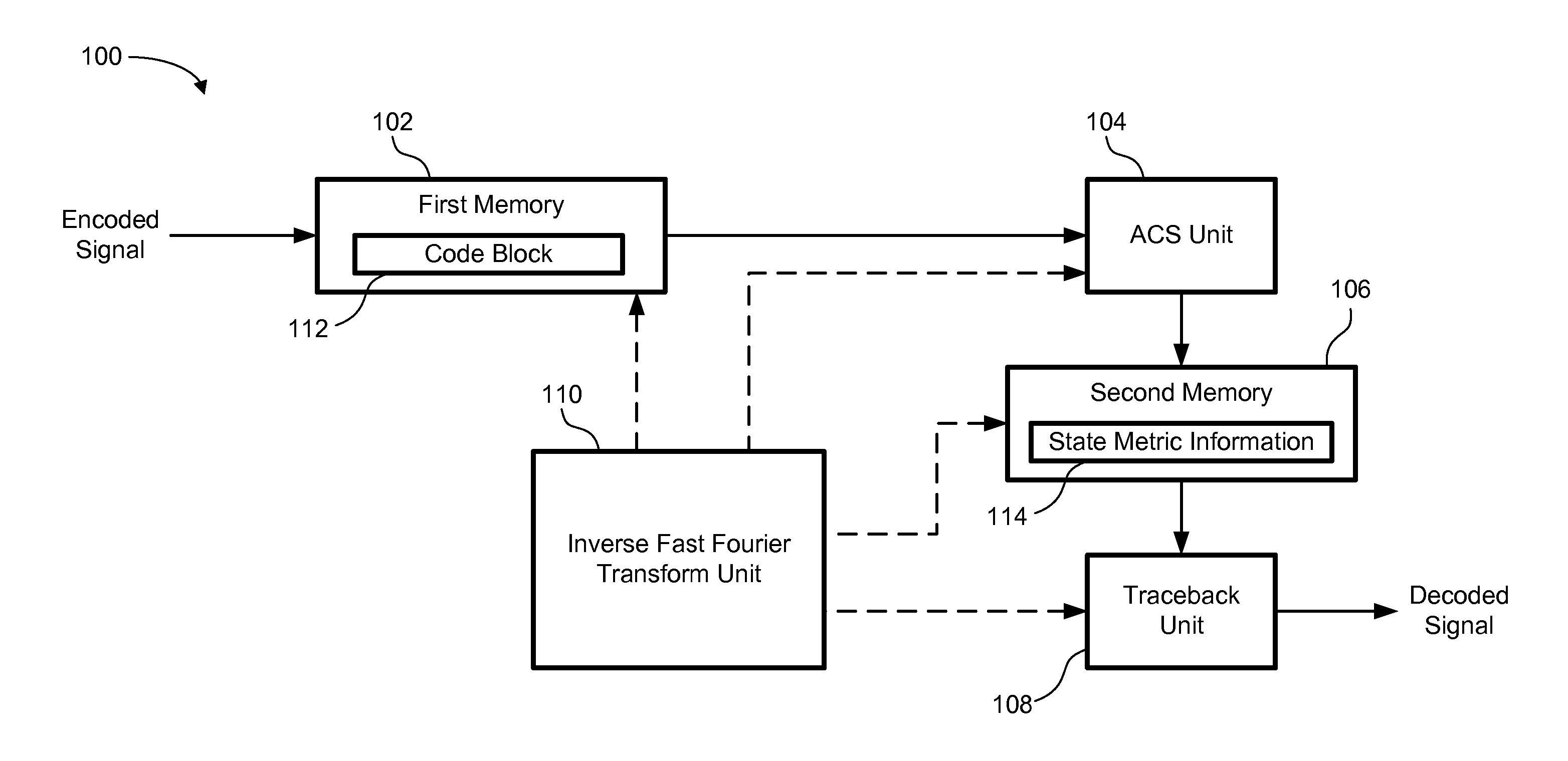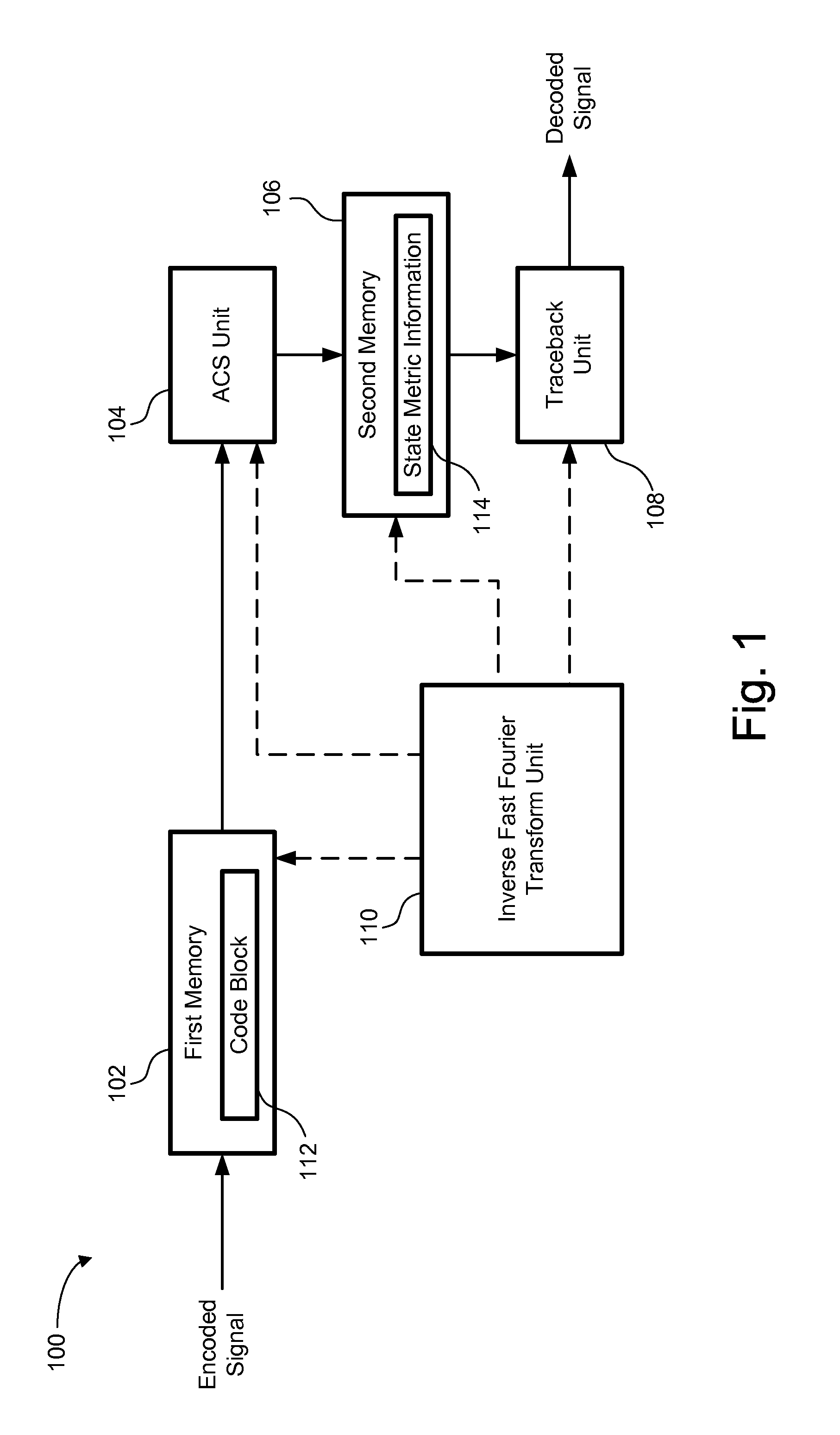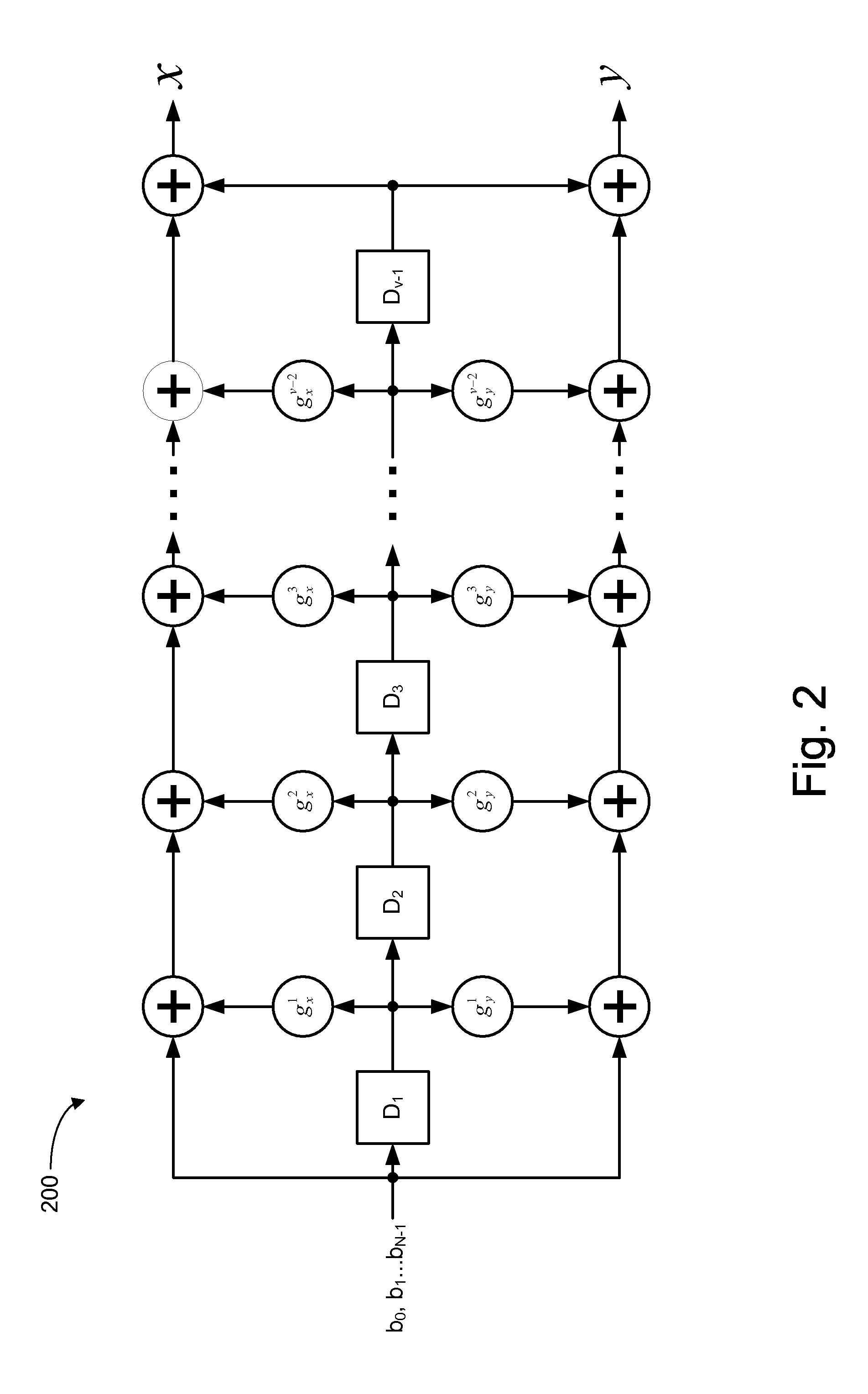Decoder and method for decoding a tail-biting convolutional encoded signal using viterbi decoding scheme
a convolutional encoded signal and encoder technology, applied in the field of decoding and method of tail-biting convolutional encoded signal using viterbi decoding scheme, can solve the problem that the conventional viterbi decoding techniques are not suitable to decode tail-biting convolutional encoded signal under the mobile wimax standard, and achieve the effect of facilitating decoding of code blocks and reducing the amount of memory required for storing state metric information
- Summary
- Abstract
- Description
- Claims
- Application Information
AI Technical Summary
Benefits of technology
Problems solved by technology
Method used
Image
Examples
Embodiment Construction
[0015] With reference to FIG. 1, a decoder 100 in accordance with an embodiment of the invention is shown. The decoder 100 operates to decode signals that have been encoded using a tail-biting convolutional encoding for forward error correction (FEC). The decoder 100 uses a Viterbi decoding scheme to decode a tail-biting convolutional encoded signal in which the initial and final states of the encoded signal are unknown. As described in more detail below, the decoder 100 is designed to perform a Viterbi-based decoding that quickly converges to the correct initial state, which reduces decoding delay. Furthermore, the decoder 100 is designed so that the required memory for decoding is reduced. The decoder 100 can be used in an Orthogonal Frequency Division Multiple (OFDM) based receiver, such as an Orthogonal Frequency Division Multiple Access (OFDMA) receiver.
[0016] Tail-biting convolutional encoded signals are encoded using a convolutional encoder, such as an encoder 200 shown in F...
PUM
 Login to View More
Login to View More Abstract
Description
Claims
Application Information
 Login to View More
Login to View More - R&D
- Intellectual Property
- Life Sciences
- Materials
- Tech Scout
- Unparalleled Data Quality
- Higher Quality Content
- 60% Fewer Hallucinations
Browse by: Latest US Patents, China's latest patents, Technical Efficacy Thesaurus, Application Domain, Technology Topic, Popular Technical Reports.
© 2025 PatSnap. All rights reserved.Legal|Privacy policy|Modern Slavery Act Transparency Statement|Sitemap|About US| Contact US: help@patsnap.com



